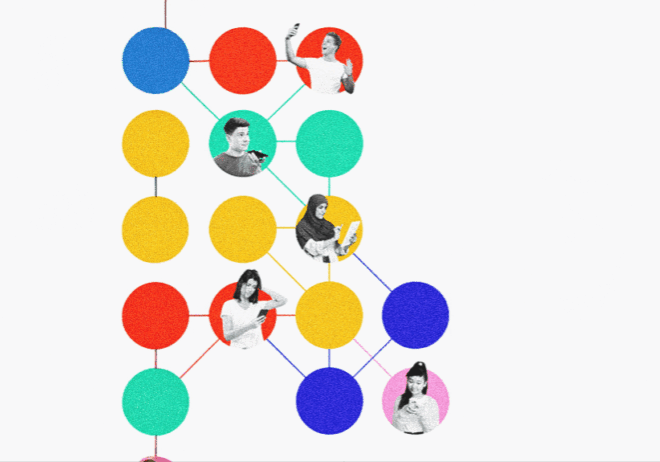
Emotional Loyalty in 2025: How to Win Lasting Customer Trust
Loyalty is not what it used to be. Remember when “buy nine, get the tenth free” was a great way to generate customer loyalty? Those days are gone. In 2025, transactional loyalty programs are beginning to look like dinosaurs—impressive at the time, but simply not built to last.
The “loyalty programs” that are offered to today’s consumers, especially the younger ones, are, at best, absurd. Points, punch cards, and flashy VIP perks simply don’t provide the same level of entertainment as they used to!
In actuality, rewards are now systematic, and a system is the opposite of genuine commitment.
What people need now is something more, something that is genuine—emotional loyalty. They want brands that resonate with them on a personal level, brands that share their values, and that help them feel validated and seen. And if your brand does not deliver, you can bet someone else will.
The collapse of transactional loyalty
Points have an expiration date. Punch cards are lost. Competitors can earn discounts in a heartbeat. The problem isn’t only that transactional rewards are bad, but they are linear. When every brand in your category provides “benefits” for equivalent efforts, it becomes an emotional connection that makes you different.
Look at what is occurring across various industries:
- Retail: Customer who have thrived over the years for mere membership cards, now want signed up for brands that share their personal purpose (from sustainability to inclusivity).
- Travel: Airlines still tease miles to the consumer, but now travel’s purpose is showcasing how they’re feeling behind the airline’s disconnection not how many points they can redeem.
- Technology and applications: Consumers are experiencing subscription fatigue, but are likely to stick around the platform that seems human (not functional).
This has nothing to do with removing perks, but more with the collective understanding that perks alone won’t cause loyalty. Easily copied. Emotional connection is not.
Real-world proof: Brands that get it right
There are brands that are not just shackling their customers to them, but are earning loyalty. The brands that won through 2024-2025 weren’t those with the steepest discounts — but ones that could build real emotional connections. Whether through purpose-driven storytelling or bold, personality-based campaigns, these brands exhibit that loyalty is about hearts and not punch cards.
Nike (2023-2024): Captured cultural relevance by featuring Caitlin Clark in a powerful Super Bowl ad, expanded its connected membership program, and deepened loyalty through exclusive access and community experiences—demonstrating that identity and empowerment create emotional connections.

Duolingo (2023-2024): Viral stunts like “Duo on Ice” and the playfully “death” of its mascot created huge social buzz, driving up daily users and revenue, showing how humor and personality can turn casual users into passionate advocates.

Emotional loyalty: The intangible moat
So what is emotional loyalty, exactly? It’s when customers don’t merely buy from you, they have a belief in you. They recommend that you do it even when no one is watching. They forgive you if you make a mistake. And yes, they will even pay more because it feels right.
Emotional loyalty is built on three essential pillars:
- Shared values: Customers must realize that your brand stands for something bigger than pulling a profit.
- Personal allure: They need to feel personally recognized, rather than being treated like “segments”.
- Trust over time: You need to be consistently there for them. If you only show up during a product launch, you aren’t building loyalty, you are just doing a campaign.
Brands winning in 2025 are treating customers like humans first, not as revenue streams.
Why 2025 makes emotional loyalty non-negotiable
The powerful blending of three forces in 2025 is dramatically changing how brands build customer loyalty — and pushing brands to realize emotional loyalty is not just a differentiator, it’s a necessary approach to thrive.
First, the choice overload of artificial intelligence. Algorithms now surface infinite options at blinding speed and erase any frictions that could keep customers on specific brands. If you’re a brand competing on either price, speed, or convenience, you’re only a click away from extinction.
Second, generational accountability. Gen Z and younger millennials expect brands to be real. They expect brands to take positions and affirm their values. They want brands to relate to them like people not formulas. A traditional points-for-purchase loyalty program, while on-brand for loyalty programs of an earlier era, doesn’t mean anything meaningful to a generation nurtured on transparency and accountability.
Third, trust in scarcity. In a digital environment polluted with deep fakes, bad data, misinformation, over-automation, and skepticism, trust is harder to build and even easier to lose. Customers have loyalty to brands they believe in, not brands that incentivize them.
Together, these three forces create a marketplace where transactional loyalty disappears, and emotional loyalty builds the ties strong enough to endure the constant change.
Creating emotional loyalty: From concept to practice
How can you create a real emotional connection with customers? Here’s what innovative marketers are doing in the year 2025.
1. Begin with a soul-searching process for your brand
Ask the hard question: What do we really stand for? Would anyone care if we disappeared tomorrow? If maximizing shareholder value is your only purpose, then achieving deep devotion will be hard.
2. Personalize without being creepy
Emotional loyalty comes from recognition, not surveillance. Personalize beyond “Hi [First Name]” emails and understand your customer’s real preferences. Spotify doesn’t just say, “we know what you listen to”—it creates curated playlists that seem like gifts, not just data mining.
3. Celebrate, don’t incentivize
Instead of trying to bribe customers to come back, celebrate with them when they come back. User-generated content, surprise shout-outs, and honest thank-yous create emotional dividends. Loyalty programs should feel like communities, not master spreadsheets.
4. Stand up for something (and be courageous
Neutral is no longer neutral—it’s invisible. Emotional loyalty develops when brands take a thoughtful stance on issues that engage their customers. Sure, there is a level of risk that you might upset some audiences, but the potential reward of developing strong bonds with the right audiences is more probable.
The metric shift: From points to feelings
Traditional loyalty metrics — redemption rates, repeat purchase frequency, lifetime value — do not give depth to emotion. Brands in 2025 will start to add new KPIs such as:
- Brand loyalty scores (the level to which customers feel emotionally connected)
- Value alignment metrics (how well customers believe your brand reflects their worldview)
- Forgiveness rates (the willingness of customers to remain connected after a misstep)
These are not vanity metrics—these are leading indicators of the long-term revenue resilience of your brand. When consumers feel connected by emotion, they will purchase more, remain longer, and advocate louder—even when a competitor shows them a “better deal.”
A future where loyalty feels human again?
The irony is that the more technology advances, the more consumers want a human connection. Emotional loyalty is not about turning away from innovation — it is about using it to build connections rather than eliminating them.
In 2025, loyalty cards will die, and loyalty hearts will blossom. Your customers want to be rewarded, but they also want to be understood. And that understanding is not simply a line in your CRM—rather, it is a living, breathing commitment to show up, speak up, and deliver on what you’ve promised.
Cut to the chase
In 2025, three powerful forces are converging that make emotional loyalty the only loyalty worth anything. AI-informed choice overload means your customers will be able to switch brands in seconds. Gen z’s demand for authenticity makes punch-card perks feel out-of-touch. And in an era of trust scarcity, customers stay loyal to the brands they genuinely believe, not based on who is giving the highest discount.


